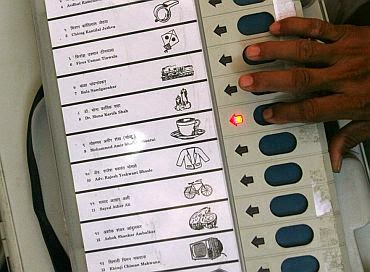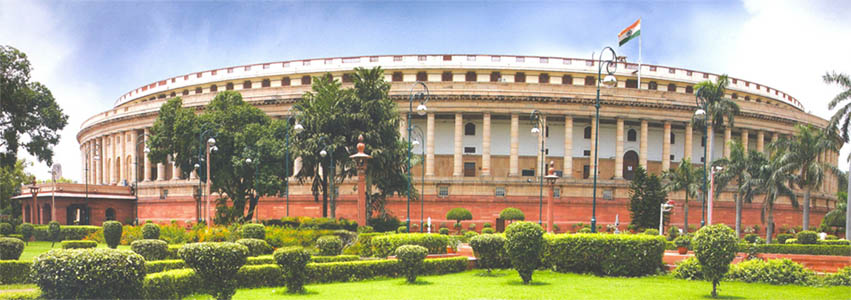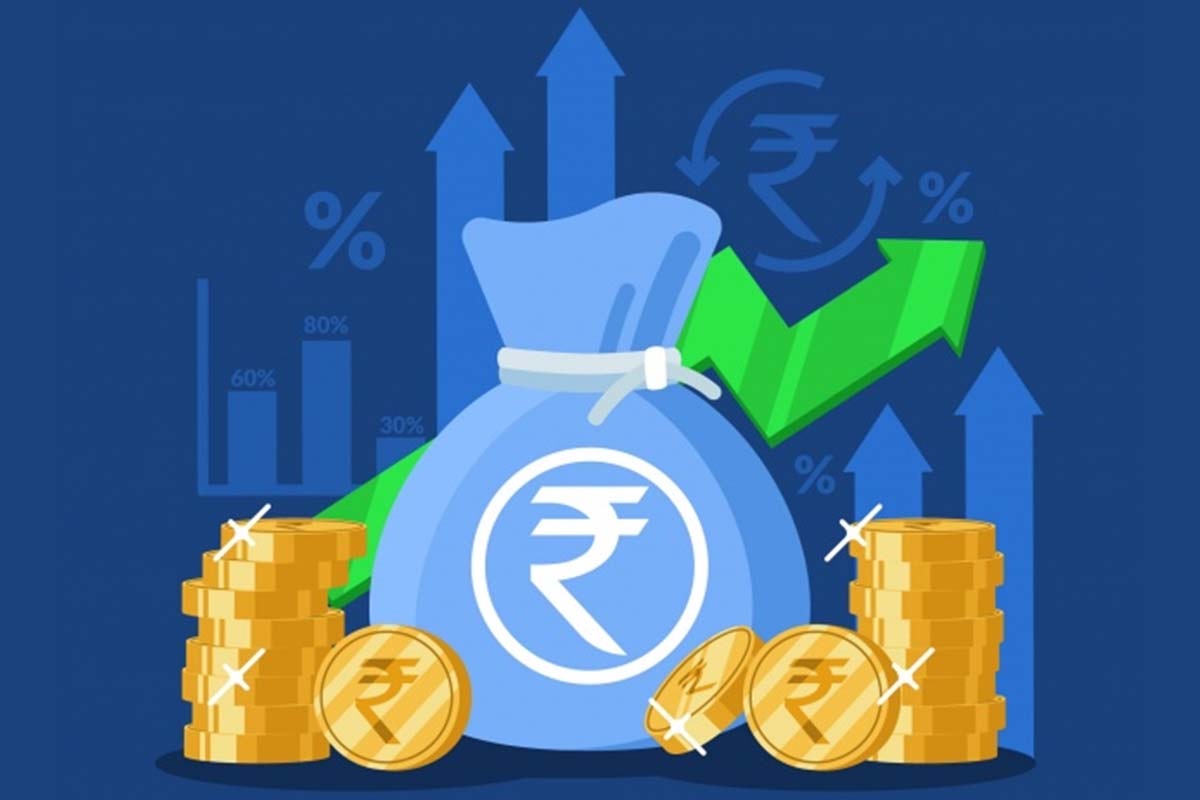Taposik
Banerjee
 With the completion of the
With the completion of therecent Lok Sabha polls the world’s largest democracy has given yet another
mandate. During the entire process of election it has been celebrated in mass
media and public life through different activities ranging from round the clock
news coverage to drawing room discussion to roadside adda. Much of this celebration had little to do with the final
outcome or say the composition of the future parliament per se but was a
celebration of the process itself.
People were happy to rediscover the role of
their minuscule existence in framing of the national policy; they were happy to
get an occasion to vote. In short, India was celebrating its democracy and
there is a clear sense of satisfaction in that celebration.
Election is the process
through which a political ideal called democracy comes into existence. One may
expect that the mandate of an election embodies all the principles that one
expects to be satisfied by a representative democracy. It is these principles
that make democracy a political ideal. Equality in voting is one of these
principles that we cherish. Someone who believes in a minimalist definition of
democracy may argue that barring few exceptions of intimidation to voters and
rigging (which clearly are violations of the principle) this principle has been
largely fulfilled as most people in the country who wished to participate in
the process have been able to do so in a fair manner. It is however a matter of
choice whether one would like to go by the minimalist definition or to go
beyond it. It is quite unlikely that the satisfaction associated with democracy
comes from one’s equal ability to press a button on the voting machine.
Equality in voting means one’s opinion commands equal importance than that of
any other in the political decision making processes.
through which a political ideal called democracy comes into existence. One may
expect that the mandate of an election embodies all the principles that one
expects to be satisfied by a representative democracy. It is these principles
that make democracy a political ideal. Equality in voting is one of these
principles that we cherish. Someone who believes in a minimalist definition of
democracy may argue that barring few exceptions of intimidation to voters and
rigging (which clearly are violations of the principle) this principle has been
largely fulfilled as most people in the country who wished to participate in
the process have been able to do so in a fair manner. It is however a matter of
choice whether one would like to go by the minimalist definition or to go
beyond it. It is quite unlikely that the satisfaction associated with democracy
comes from one’s equal ability to press a button on the voting machine.
Equality in voting means one’s opinion commands equal importance than that of
any other in the political decision making processes.
A primary objective of a
representative democracy is to represent people’s opinions and desires in the
decision making process. People send their representatives to the parliament to
voice their opinions. If opinion of every citizen truly commands equal importance
then it is imperative that each such opinion be represented in the decision
making process. Choosing a representative is therefore just a means and not an
end in itself for the realisation of the principle of equality in voting. The
discussions and debates that take place in the parliament in the process of
framing a policy is of no less importance for the realisation of the principle.
Democracy gets defeated if either the representatives refrain from joining
these debates and discussions (for whatever reason) and thereby fail to voice
people’s opinions or the representatives elected do not truly represent the
composition of people’s opinion in the country. We shall be focusing here on
the role of the voting procedure that may generate the second type of defect
that has just been mentioned.
representative democracy is to represent people’s opinions and desires in the
decision making process. People send their representatives to the parliament to
voice their opinions. If opinion of every citizen truly commands equal importance
then it is imperative that each such opinion be represented in the decision
making process. Choosing a representative is therefore just a means and not an
end in itself for the realisation of the principle of equality in voting. The
discussions and debates that take place in the parliament in the process of
framing a policy is of no less importance for the realisation of the principle.
Democracy gets defeated if either the representatives refrain from joining
these debates and discussions (for whatever reason) and thereby fail to voice
people’s opinions or the representatives elected do not truly represent the
composition of people’s opinion in the country. We shall be focusing here on
the role of the voting procedure that may generate the second type of defect
that has just been mentioned.
Voting procedure plays an
important role in shaping up of the composition of parliament. The procedure
that we follow in India is called the first past the post (FPTP) system. We
inherited this system from our previous colonial rulers. In this system in each
constituency the candidate who gathers largest number of votes wins. Winners
from constituencies across the country represent the people and form the
composition of the parliament. This apparently benign system has the potential
to create serious problems for the realization of the principle we mentioned.
This system is notorious for creating discrepancies between vote share of a
party and its share of seats in the parliament. Some such discrepancies can be
observed from the mandate of the last election and has been pointed out in
several news paper articles following the election results. The largest political
party BJP with 31% vote share in the country has 282 seats in the parliament
which is 51% of all seats. The NDA with 38.5% vote share commands around 61%
seats whereas non-NDA parties together got 61.5% of all votes polled but have
39% seats.
important role in shaping up of the composition of parliament. The procedure
that we follow in India is called the first past the post (FPTP) system. We
inherited this system from our previous colonial rulers. In this system in each
constituency the candidate who gathers largest number of votes wins. Winners
from constituencies across the country represent the people and form the
composition of the parliament. This apparently benign system has the potential
to create serious problems for the realization of the principle we mentioned.
This system is notorious for creating discrepancies between vote share of a
party and its share of seats in the parliament. Some such discrepancies can be
observed from the mandate of the last election and has been pointed out in
several news paper articles following the election results. The largest political
party BJP with 31% vote share in the country has 282 seats in the parliament
which is 51% of all seats. The NDA with 38.5% vote share commands around 61%
seats whereas non-NDA parties together got 61.5% of all votes polled but have
39% seats.
The mismatch between the
proportion of votes and seats can be quite arbitrary as well under the FPTP
system. For example a party like TMC with 3.9% vote share wins 34 seats which
is more than 6% of all seats whereas a party like BSP with 4.2% vote share gets
no representation in the parliament. ADMK with 3.3% vote share manages to
command 37 seats where as the two left parties CPIM and CPI together got 4% of
country’s vote but managed to get only 10 seats. With just 1.7% vote share BJD
wins 20 seats whereas with 3.4% votes SP wins only 5 seats. Again INC with 19.3%
vote share gets 44 seats in 2014 election where as in the last parliament BJP
had 116 seats with just 18.5% vote share that they got in 2009 election. One
can observe many such discrepancies from the past election data. We however,
need to understand that these discrepancies have implications for the
democratic discourse of this country and are too serious to be ignored as just
some post-election amusing facts. It is a serious drawback for democracy
because it does not allow to properly represent people’s opinions in the
decision making process. Opinions of a significantly large section of the
population will either be not represented or be terribly under represented. In
such a situation how far the decisions taken in the parliament (even after
following all rules) are to be democratic in true sense, can be questioned.
proportion of votes and seats can be quite arbitrary as well under the FPTP
system. For example a party like TMC with 3.9% vote share wins 34 seats which
is more than 6% of all seats whereas a party like BSP with 4.2% vote share gets
no representation in the parliament. ADMK with 3.3% vote share manages to
command 37 seats where as the two left parties CPIM and CPI together got 4% of
country’s vote but managed to get only 10 seats. With just 1.7% vote share BJD
wins 20 seats whereas with 3.4% votes SP wins only 5 seats. Again INC with 19.3%
vote share gets 44 seats in 2014 election where as in the last parliament BJP
had 116 seats with just 18.5% vote share that they got in 2009 election. One
can observe many such discrepancies from the past election data. We however,
need to understand that these discrepancies have implications for the
democratic discourse of this country and are too serious to be ignored as just
some post-election amusing facts. It is a serious drawback for democracy
because it does not allow to properly represent people’s opinions in the
decision making process. Opinions of a significantly large section of the
population will either be not represented or be terribly under represented. In
such a situation how far the decisions taken in the parliament (even after
following all rules) are to be democratic in true sense, can be questioned.
The defect that we are trying
to point out here is not a fault of any participant of the election process or
of any constitutional body that is involved in the process of running the
election or government. The defect is in built in the voting process that we
follow. With its potentiality to undermine valuable democratic principles, FPTP
system can create far worse consequences. Imagine a hypothetical situation
where ten candidates from 10 different parties are fighting for a constituency
seat. Suppose each of them has more or less equal support base. Imagine farther
that after election 8 candidates got a vote share of 10% each, one candidate
got 9% vote share and the candidate from party number 10 got 11% vote share. If
we farther imagine that this phenomenon gets replicated in all constituencies
then with just 11% vote share from the entire country party number 10 would
occupy all seats in the parliament with no traces of any opposition. People who
favour the FPTP system because they believe it provides stable government
cannot expect anything more stable. However, such stability comes at the cost
of democratic values.
to point out here is not a fault of any participant of the election process or
of any constitutional body that is involved in the process of running the
election or government. The defect is in built in the voting process that we
follow. With its potentiality to undermine valuable democratic principles, FPTP
system can create far worse consequences. Imagine a hypothetical situation
where ten candidates from 10 different parties are fighting for a constituency
seat. Suppose each of them has more or less equal support base. Imagine farther
that after election 8 candidates got a vote share of 10% each, one candidate
got 9% vote share and the candidate from party number 10 got 11% vote share. If
we farther imagine that this phenomenon gets replicated in all constituencies
then with just 11% vote share from the entire country party number 10 would
occupy all seats in the parliament with no traces of any opposition. People who
favour the FPTP system because they believe it provides stable government
cannot expect anything more stable. However, such stability comes at the cost
of democratic values.
Consider another example
(table 1). We have a parliament with three constituencies and in each
constituency there are 10 voters. Following table shows the number of votes
polled in favour of each of the three contesting parties in each of the three
constituencies.
(table 1). We have a parliament with three constituencies and in each
constituency there are 10 voters. Following table shows the number of votes
polled in favour of each of the three contesting parties in each of the three
constituencies.
Table 1
|
|
Constituency
1 |
Constituency
2 |
Constituency
3 |
|
Party
A |
4
|
4
|
1
|
|
Party
B |
3
|
3
|
6
|
|
Party
C |
3
|
3
|
3
|
Notice that under FPTP system
Party A gets only 9 votes but forms the government by winning 2 out of 3 seats.
Party B gets 12 votes but sits in the opposition by winning just 1 seat. Party
C has same number of supporters as Party A; but does not get the opportunity to
represent them in the parliament. Clearly one does not expect this as a
democratic outcome.
Party A gets only 9 votes but forms the government by winning 2 out of 3 seats.
Party B gets 12 votes but sits in the opposition by winning just 1 seat. Party
C has same number of supporters as Party A; but does not get the opportunity to
represent them in the parliament. Clearly one does not expect this as a
democratic outcome.
The previous two hypothetical
examples brought out a fundamental problem of the first past the post system,
namely its inadequacy to deliver an outcome that goes with the spirit of a
democracy. Some people may like to discard these examples by arguing that these
are pathological or extreme cases. But we need to remember that robustness of a
system can only be tested by looking at how well it handles extreme situations.
examples brought out a fundamental problem of the first past the post system,
namely its inadequacy to deliver an outcome that goes with the spirit of a
democracy. Some people may like to discard these examples by arguing that these
are pathological or extreme cases. But we need to remember that robustness of a
system can only be tested by looking at how well it handles extreme situations.
This article, although written
against the backdrop of 2014 Lok Sabha election results, is neither to
celebrate nor to criticize the mandate per se. The article has been motivated
by an old, well known to a section of academia, but less discussed limitation of
the voting process. There has been a suspicion that the phenomenon of a
democracy being a victim of this limitation may not be a rare event. That
suspicion got vindicated by the results of the last election. There is no
denial of the fact that FPTP is a popular voting mechanism used in many
countries including United States and United Kingdom apart from India. But
there is also no denial that its popularity is dwindling and its effectiveness
increasingly being questioned. There are many alternative voting procedures
regularly used in several other countries. This is not to argue that any of
those alternative procedures will be a perfect system. But surely it is worth
to find out how effective they would be in satisfying some of the principles of
democracy; principles that we would like to observe in our democracy.
against the backdrop of 2014 Lok Sabha election results, is neither to
celebrate nor to criticize the mandate per se. The article has been motivated
by an old, well known to a section of academia, but less discussed limitation of
the voting process. There has been a suspicion that the phenomenon of a
democracy being a victim of this limitation may not be a rare event. That
suspicion got vindicated by the results of the last election. There is no
denial of the fact that FPTP is a popular voting mechanism used in many
countries including United States and United Kingdom apart from India. But
there is also no denial that its popularity is dwindling and its effectiveness
increasingly being questioned. There are many alternative voting procedures
regularly used in several other countries. This is not to argue that any of
those alternative procedures will be a perfect system. But surely it is worth
to find out how effective they would be in satisfying some of the principles of
democracy; principles that we would like to observe in our democracy.
While we all like to celebrate
our democracy we spend little time to ponder about the process through which we
achieve it. Elections are an integral part of democracy. A voting procedure is
the means through which an abstract concept of democracy gets translated into
reality. It is worth to revisit and question whether the voting procedure in
its present form commensurate with the concept of democracy that we cherish so
much.
our democracy we spend little time to ponder about the process through which we
achieve it. Elections are an integral part of democracy. A voting procedure is
the means through which an abstract concept of democracy gets translated into
reality. It is worth to revisit and question whether the voting procedure in
its present form commensurate with the concept of democracy that we cherish so
much.
The
author is Assistant Professor, School of Liberal Studies Ambedkar University,
Delhi.
author is Assistant Professor, School of Liberal Studies Ambedkar University,
Delhi.
Email: taposik@gmail.com


